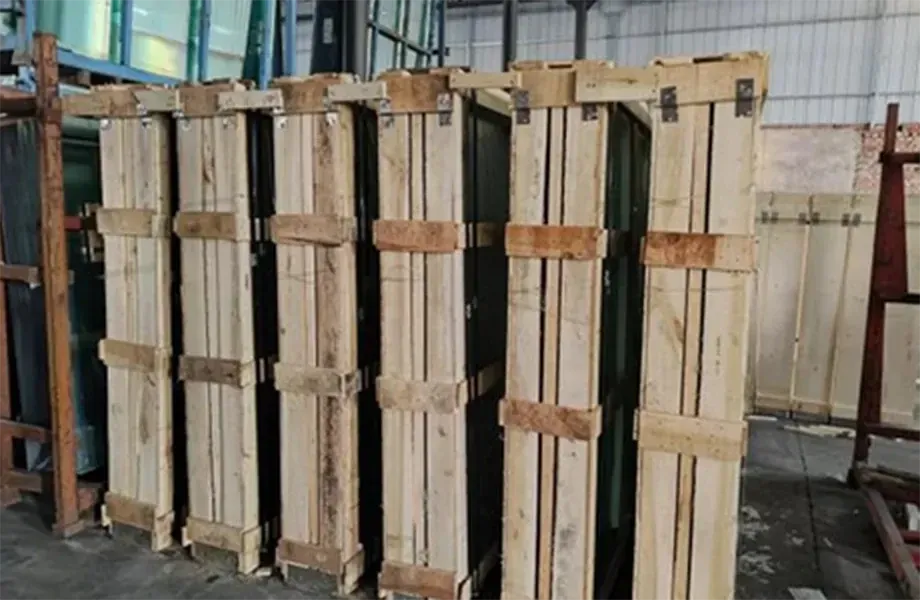Nov . 05, 2024 00:46 Back to list
annealed float glass
The Emergence and Significance of Annealed Float Glass in Modern Applications
Annealed float glass, a cornerstone of modern architecture and design, holds a significant place in the materials used across various industries. This type of glass is produced through the float glass process, which was developed in the mid-20th century and revolutionized the glass industry. Understanding annealed float glass involves exploring both its production process and its varied applications, which highlight its importance in contemporary society.
The production process of annealed float glass begins with the melting of raw materials, primarily silica sand, soda ash, and limestone, in a furnace at high temperatures exceeding 1,600 degrees Celsius. Once melted, the molten glass is poured onto a bed of molten tin, which creates a flat, smooth surface. This method ensures that the glass is uniform in thickness, free from impurities, and possesses a flawless finish. After the glass solidifies, it undergoes an annealing process, where it is gradually cooled in a controlled environment to relieve internal stresses. This cooling process ensures that the glass achieves optimal strength and durability, making it suitable for various applications.
One of the primary benefits of annealed float glass is its clarity and transparency, which makes it an ideal choice for windows in residential and commercial buildings. The smooth surface allows for maximum light transmission while providing a clear view, making spaces feel more open and airy. In addition, its versatility extends beyond windows; it is commonly used in glass doors, shower enclosures, and facades. As architectural designs become increasingly avant-garde, the demand for clean lines and expansive glass surfaces has surged, further cementing the role of annealed float glass in modern architecture.
annealed float glass

In recent years, a growing emphasis on energy efficiency and sustainability has also influenced the use of annealed float glass. Manufacturers have responded to this trend by developing low-emissivity (low-E) coatings that can be applied to the surface of float glass. These coatings reflect infrared radiation while allowing visible light to pass through, thereby enhancing insulation properties and reducing heating and cooling costs in buildings. Consequently, annealed float glass not only supports aesthetic considerations but also contributes to environmental sustainability by minimizing energy consumption.
Beyond architecture, annealed float glass is utilized in a variety of other industries. For example, in the automotive industry, it serves as the primary material for windscreens, side windows, and rear windows in vehicles. The safety and clarity of float glass make it an essential component, ensuring that drivers have unobstructed views while providing the necessary strength to withstand impacts. Furthermore, in the field of electronics, float glass is used as substrates for LCD screens and touch panels. The precision and flatness of annealed float glass make it an excellent choice for high-tech applications that require meticulous attention to detail.
Despite its many advantages, it's essential to acknowledge the limitations of annealed float glass. While its ease of fabrication and cost-effectiveness make it a popular choice, it lacks the thermal strength of tempered glass. As a result, it can be more susceptible to breakage under certain conditions. For applications that demand higher strength and resistance to thermal stress, tempered glass is often preferred. Nonetheless, the balance of affordability and functionality keeps annealed float glass in high demand.
In conclusion, annealed float glass has become an integral part of modern life, playing a vital role in architecture, automotive design, electronics, and beyond. With its clarity, versatility, and potential for energy efficiency, it stands as a testament to the innovations of the glass manufacturing industry. As we continue to seek sustainable and aesthetic solutions in various fields, the significance of annealed float glass will undoubtedly persist, enabling us to build a brighter and more transparent future.
-
Safety and Style with Premium Laminated Glass Solutions
NewsJun.24,2025
-
Reinvents Security with Premium Wired Glass
NewsJun.24,2025
-
Premium Float Glass Line for Modern Architecture
NewsJun.24,2025
-
Low Emissivity Glass for Energy-Efficient Architecture
NewsJun.24,2025
-
High-Performance Insulated Glass Solutions for Modern Architecture
NewsJun.24,2025
-
Elevates Interior Style with Premium Silver Mirror
NewsJun.24,2025
Related PRODUCTS














